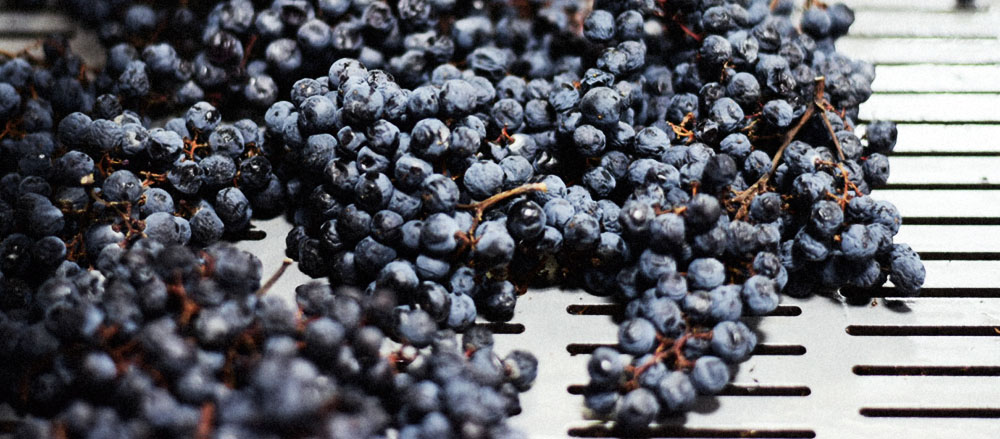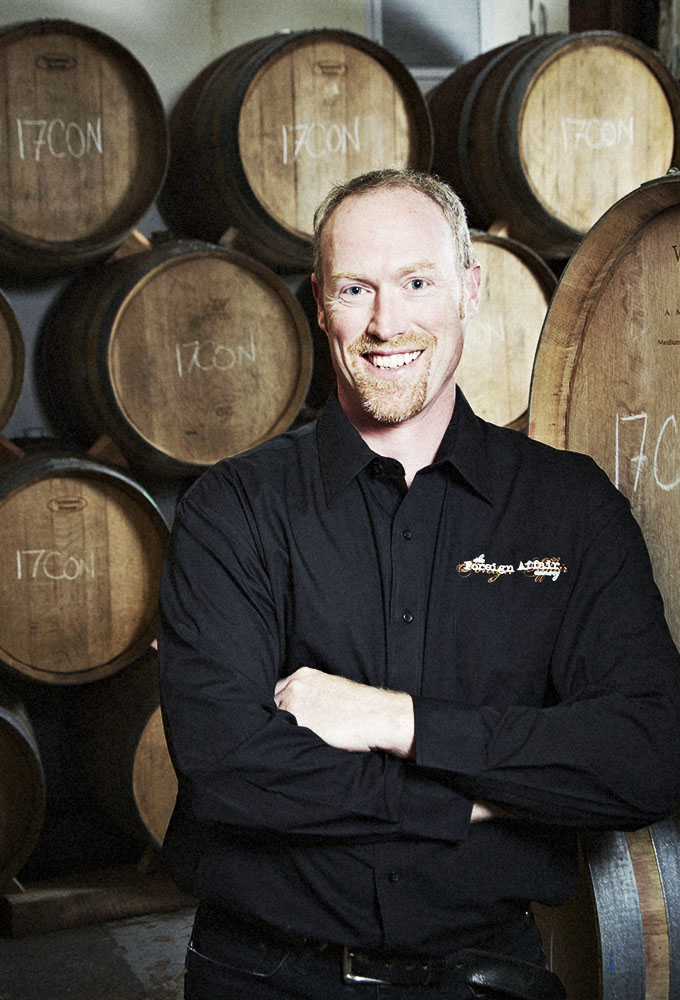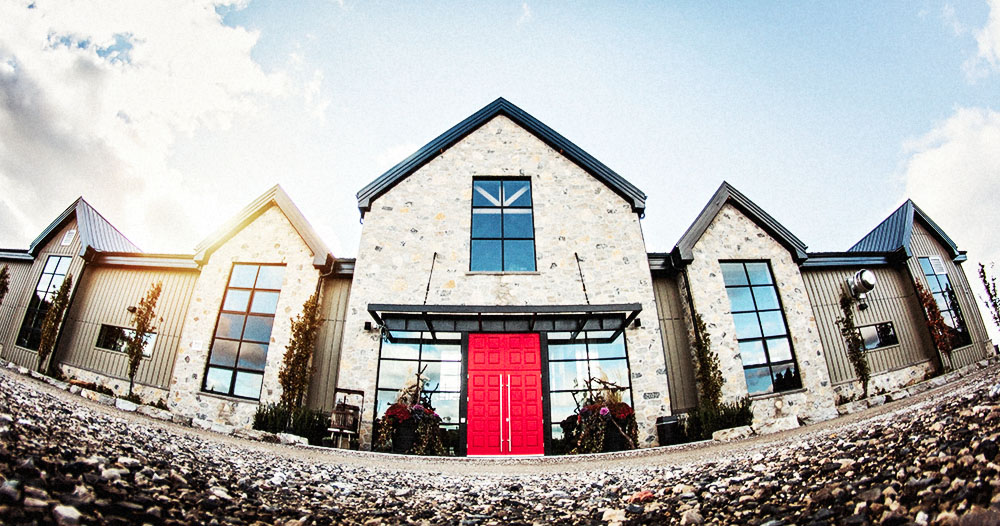
Many people consider Amarone to be an amazing wine, whereas its progenitor, Valpolicella, they regard as just, “meh.” A simple pizza wine.
Amarone is the quintessential Italian biggie — deeply coloured, slightly browning at the edges and thickly textured with full body, high alcohol and concentrated aromas and flavours that can venture into the realm of caramelized fruit, dried cherries, stewed plums, dark chocolate, short espresso, fine leather and herbal bitters.
Amarone is dry on the palate with implicit sweetness on the nose, but there’s also a rare, sweet version called Recioto, with a delicious, fruity richness that’s perfect with biscotti, cakes, panettone, bittersweet desserts like Tiramisu or rich, salty, aged cheeses.
The secret to these specialty wines is an ancient technique of air-drying grapes called appassimento.
Whole bunches of ripened grapes were carefully hung on hooks or laid out in single layers on straw or wooden racks to allow for easy air movement all around. Windows were opened on sunny days to let cool November winds flow freely and boarded shut on rainy days.
Over the months, the grapes slowly dehydrated in the breeze; the fruit began to shrivel like raisins. These concentrated berries were then pressed, fermented and aged, yielding wines of exceptional power, density and complexity — unlike any “normal” wine.
In the Dark Ages, the process was abandoned and forgotten, until almost a century ago when some winemakers in Italy’s Veneto region began experimenting with air-drying. Today’s producers use every modern technical control over temperature, humidity and airflow to ensure the grapes remain healthy. Although the ancient principles are followed, the modern way has become a clinical process.
For the longest time, Magnotta winemaker Peter Rotar was the only Canadian using appassimento to improve the quality of red wines. The winery introduced its flagship brand, Enotrium, in 2001.
Owner Gabe Magnotta’s idea was not to copy Amarone, since he couldn’t get the required grapes — Corvina, Molinara and Rondinella — but to create an Amarone-inspired VQA Ontario wine using the classic Bordeaux grapes, Cabernet Franc, Cabernet Sauvignon and Merlot.
In 2004, Len Crispino became the first producer to dedicate his entire portfolio at Foreign Affair Winery to appassimento-made wines. Folks thought he was crazy at first, but have followed in his footsteps since.
Working with the Vineland Research and Innovation Centre (VRIC), Crispino helped develop some of the early air-drying techniques currently in use. In what he calls his slow-wine process, Crispino employs industrial fans to blow cold air into and out of his grape warehouse for almost 100 days, dehydrating the fruit by as much as 50 percent.
The winery was presented with the Premier’s Award for Agri-Food Innovation, in recognition of “its pioneering efforts to improve Canadian winemaking by applying the classic methods of appassimento to local grapes.” (The VRIC further adapted the technology and patented a Free-Air System for use by smaller wineries that want to try making wine from air-dried grapes.)
A few years later, the idea of converting some of southern Ontario’s discontinued tobacco kilns into grape-drying facilities caught the attention of new as well as established wineries. Reif Estate Winery in Niagara-on-the-Lake purchased a couple of kilns and had them moved to the property. It now offers two premium-priced kiln-dried reds and one white.
Seven investors built the small but well-equipped Burning Kiln Winery on an old tobacco farm they purchased in 2007 in Norfolk County, just west of Turkey Point Provincial Park. As the winery’s name implies, every product made here is touched in some way by the kiln-drying process.
Since Ontario’s wine colleges started adding courses in appassimento winemaking, graduates have been better able to handle the intricacies of choosing grape varieties, selecting the ripest bunches, monitoring sugars, acids and tannins, identifying temperature and humidity sweet spots, as well as discovering the limitations of the process.
The first and most obvious restriction is that one cannot “ripen” grapes with air-drying. The process simply concentrates existing flavours. When grapes are underripe, they yield an iffy, bitter, alcoholic wine.
Winemaker Shauna White at Adamo Estate in the Hockley Hills of south-central Ontario air-dries some of her ripest grapes for as little as 15 days, reducing water content by just a few percent. Her 2016s — Cabernets, Merlot, Petit Verdot and Meritage — are concentrated and dense, while retaining all their youthful aromas and flavours, rather than venturing into the range of stewed fruits.
Sadly, I did not get to taste the wines of Big Head, owned by Andrzej Lipinski, or those of Colaneri Estates, whose winemaking he oversees but Lipinski has been the poster boy for appassimento winemaking in Ontario for many years.
One imperative to fully enjoying these wines, because they are so tight and closed in their youth, I recommend a full day of aeration before they begin to reveal their personalities.
I invited a couple of colleagues to taste 30 wines with me. (Why waste a unique opportunity to taste so many at once?) Thinking it might help the wines evolve, I opened the bottles an hour before my friends arrived. It made no difference at all.
Most of the wines only began to relax and show varietal characteristics the following day. Others needed the time to blow off early bottle smells, volatile acidity, disjointed aromas and flavours, alcoholic disharmony and other symptoms of uneasy winemaking. Re-tasted daily, most of them lasted a full week.

So, here’s my advice: open, taste, decant, serve tomorrow.

Adamo Estate Meritage 2016, Niagara Escarpment ($45)
Subdued and elegant nose brings together all the elements in a harmonious bouquet of red and black fruits. Clean, smooth palate with sweet fruit flavours solidly supported by soft tannins. This one can go a decade or more.
Arterra Estate Epoca 2016, Niagara Peninsula ($35)
Purple-garnet colour. High-toned aromas of dark cherries and raspberry jam. Rich and jammy flavours, like black cherry liqueur. Could be amazing with a piece of dark chocolate.
Burning Kiln M-1 Kiln-Dried Merlot 2016, Ontario ($59.95)
Garnet hue with an orange-brown rim. Dark stewed fruit and yogurt aromas. Flavours are jammy and somewhat caramelized with a hot and heavy finish. 16.2% alc./vol.
Cave Spring Cellars La Penna 2016, Beamsville Bench ($49.95)
One of the few wines that was approachable from the get-go. Although this is a blend of French grapes, there’s a definite Italian twang to it. Aromatically and stylistically, it reminded me of Tignanello. Even more delicious on the second day. Concentrated, elegant, complex, and full of promise for so much more in the future. Best value.
Ridgepoint Wines Merlot Appassimento 2013, Twenty Mile Bench ($60)
Garnet bowl with browning rim. Mature, plummy aromas and sour cherry flavours are tasty and lasting. Good concentration of fully mature fruit. For short-term cellaring.
Foreign Affair Winery The Conspiracy 2016, Niagara Peninsula ($21.95)
Widely available throughout the country and general-listed in Ontario stores, this is the perfect introduction to appassimento. Bright, fruity nose of blackberry and raspberry, medium-bodied, dry, with mouth-watering acidity, soft tannins and plenty of charm. Can age, but why bother.
Foreign Affair Winery Apologetic Red 2016, Niagara Peninsula ($69.95)
Deep purple-garnet colour. Aromas of black fruits, liquorice, bouquet garni and shoe wax. Concentrated, rich and dense, with sweet fruit, lush texture, dark chocolate nuances, solid tannins and enough alcohol to tingle my tongue. Winery only. Sorry, not sorry.
Kew Vineyards Heritage 2013, Niagara Peninsula ($39.95)
Garnet with a rich browning edge. Fullish, mature nose hints at game, soy, earth and prunes. Medium-bodied, with mouth-watering acidity, tart cherry pie flavours and a long finish. Cheese, please.
Magnotta Winery Enotrium 2015, Niagara Peninsula ($59.95)
The winery’s 15th vintage. Deep inky garnet hue with a rosy tinge on the rim. Rich, dense, ripe, dark fruit — blackberry cherry, plum — with vanilla, dark coffee and spice notes. Very tannic but in perfect harmony with the dense fruit, tight acidity and restrained alcohol at 14.9%. A terrific cellar-worthy vintage.
Pillitteri Estates Riserva Famiglia Appassimento Fruttaio 2015, Niagara-on-the-Lake ($98)
There are four wines in this series: Cab Franc, Merlot, Trivalente (a Bordeaux blend) and Fruttaio. All are deeply coloured, powerful and concentrated. Their noses are closed and unyielding with dark, dense fruit lurking in the background, waiting, wanting years to mature. This unique blend includes all three classic Italian grapes — Corvina, Rondinella and Molinara — plus a good dollop of Merlot. Everything about it seemed a smidge softer: smooth, ripe, ruby-cherry flavours, silky texture, round mouthfeel and a long, complex and seductive finish. The price is high, but, wow, what a wine.
Reif Estate Winery The Magician Shiraz-Pinot Noir 2016, Niagara Peninsula ($30)
Highly praised by British wine writer Jamie Goode, I was somewhat less enamoured by this odd couple. Inky purple-garnet colour. Sweet blackberry flavours with a tart, cooked cherry undertone and some herbal, earthy notes in the tannic finish. Better on Day 2? You decide.
Rennie Estate Super G Cabernet Sauvignon 2016, Beamsville Bench ($60)
Where any other appassimento Cabernet Sauvignon might benefit from a day’s breathing, this one might do better with two. It was super dense, super concentrated and super tough on Day 1. Restrained and closed, it had a nutty, almost silky smooth, chocolatey twang to it. On Day 2, it showed varietal characteristics — cassis, violet, black tea — but after Day 3, all the flavours came together in a powerful grape stew. Dark, dark fruit, bitter chocolate and spicy oak flavours, a tough, tannic structure and a long, chest-thumping finish. Found my G-spot.

Just curious as to why Vieni Estates was not mentioned in this Appassimento article